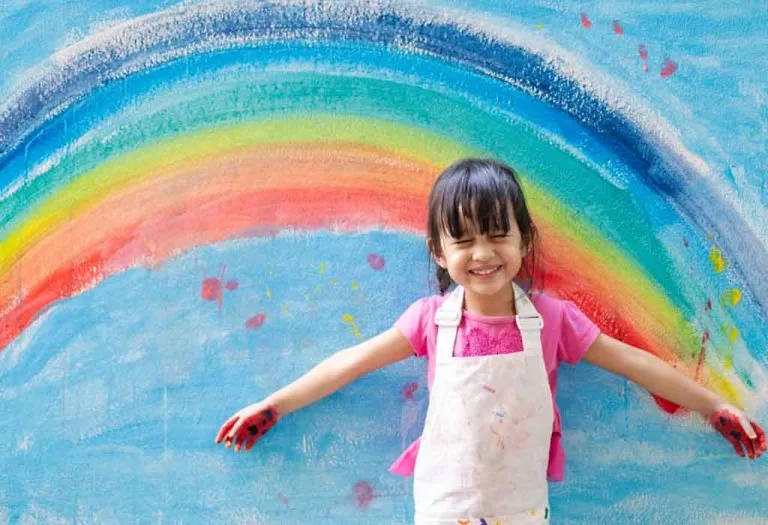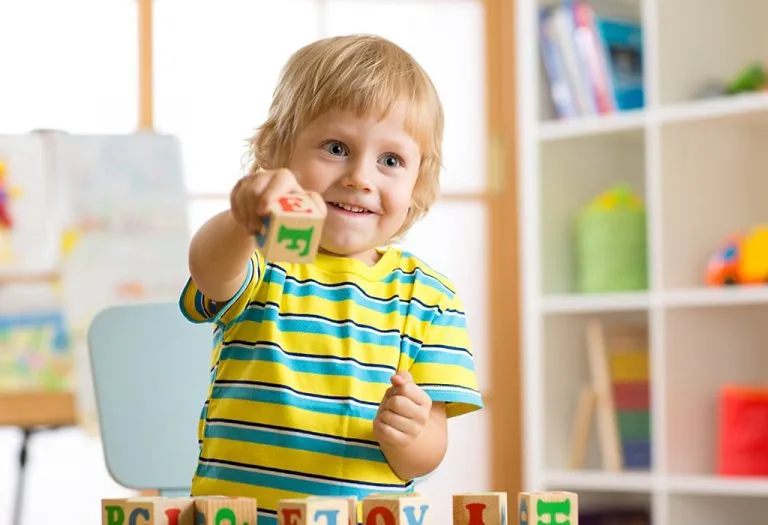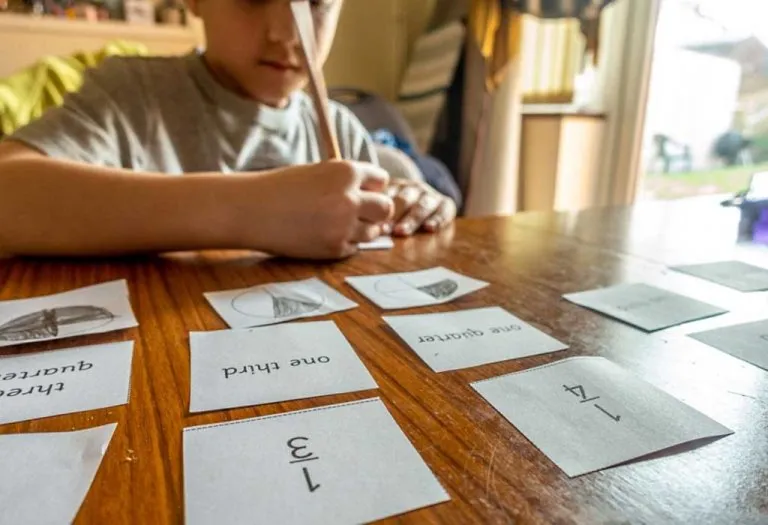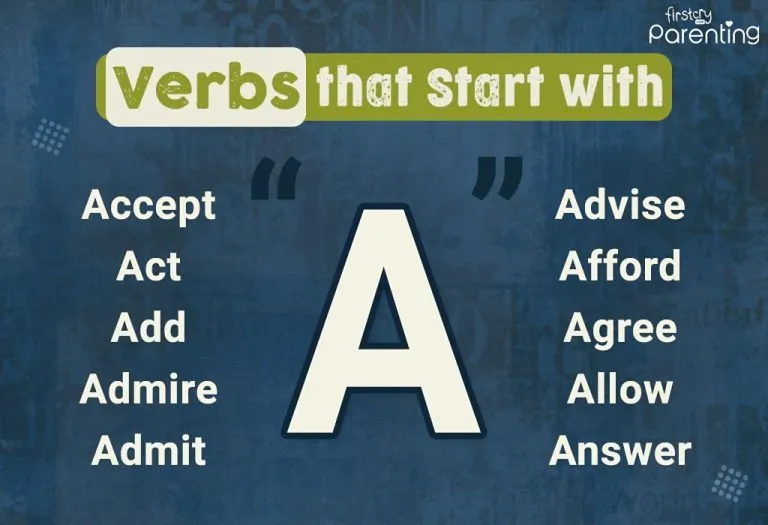Reggio Emilia Approach to Early Childhood Education
The Reggio Emilia approach to learning is one of the most effective ways of providing childcare. Every child is different, and they can comprehend the world around them from their vivid imaginations and learn how to express and communicate effectively in a creative manner. This child-centred approach has a unique way of helping children co-learn in a different kind of setting. The learning method focuses more on a child’s natural curiosity and exploration rather than rote learning. With an easy rhythm and hands-on activities, the Reggio Emilia approach theory brings out the best in children. Read on to learn more about this approach.
What Is the Reggio Emilia Approach?
Before diving deep into the topic, let us first understand what it means in a very concise yet explanatory manner. Children are always curious about everything around them. They want to explore and have the freedom to experience the environment that surrounds them at their full capacity. The activities involved in the Reggio Emilia method of learning are enriched by exactly such kinds of mindsets where the child is given the rightful opportunity of things like self-expression, logical thinking, effective communication, and mindful problem-solving techniques. They are also encouraged to absorb and feel the five senses, such as touch, taste, smell, hearing, and seeing everything that encapsulates them and make their interpretation of them (1).
When Was the Reggio Emilia Approach Developed?
The approach to education was coined decades ago, and the history of its inception is quite profound and interesting, too. According to sources, it was developed way back in the 1950s. It was curated in the early setting of childcare, and the name has been derived from a place called “Reggio Emilia” tucked somewhere in Northern Italy.
Benefits of Reggio Emilia Approach
Here are some advantages of the Reggio Emilia approach:
1. Effective Problem-Solving
Through practical experience, children can truly know the various life lessons they are supposed to be well acquainted with. In this case – children are put into small group-like settings where they are given projects to work on. They are given full liberty to research to their maximum potential and find ways to explore and explain the concepts and problems-in-hand better to come up with solutions. They are even given some real-life problems that they need to crack with their peers. They are also given a chance to question the topic at hand and use materials to comprehend and come up with a way of tackling it.
2. Encouraging Them to Do Better
The best advantage of the Reggio Emilia approach is how they are constantly encouraged and motivated to find their unique way of exploring and expressing themselves. All the techniques embedded in this approach always give freedom to children to work on projects that they find intriguing and are curious about. Children are also encouraged to work on their relationships and building a strong communal bond with their friends, families, and teachers.
3. Learning Through Explorations
The best way to bring some solace to curious minds is to let them explore, observe, and learn. The “100 languages” concept precisely emphasises the fact of how children find their special way of understanding their thoughts and then expressing themselves. Artists worldwide believe that through the art of dancing, singing, sculpting, theatre, and painting, children can express their thoughts and the world they imagine from their perspective.
Principles of Reggio Emilia Approach
Let us focus on the most important and the four central Reggio Emilia principles that you should be aware of if you are making use of this childcare approach:
1. In-Depth Projects
Most of us must have spent our school days learning, staring at a teacher as they explain things. However, in this approach, each child gets to learn from a project structured around his areas of interest. Teachers call these “adventures”. They document the child’s development as these projects progress to track their growth.
2. The Practice of Collaboration
It is a very good idea to connect, discuss and collaborate with students to make them feel heard and respected, and their views being important. It is said that in a classroom that has been inspired by the Reggio approach, children get a sense of collaboration when they communicate with their peers and discuss with their teachers. It helps foster self-growth and also gives them a sense of self-worth.
3. Wholesome Curriculum
This approach has a mix of what the child holds his interests in. Effective communication with the family and the teacher’s observations help collate and build a curriculum that garners the child’s maximum interest and fosters his development.
4. Unique Representation
The idea of this approach is based on every child’s unique way of expressing himself. This is what the teachers encourage as well, which gives the child the choice of a form of art, such as music, dance, drawing, painting, acting, etc., to express himself in a way he feels comfortable.
5. Nature as an Invisible Teacher
In the Reggio Emilia approach in early childhood education, nature is given substantial importance. The learning is surrounded by open spaces, plants, natural lighting, and frequent hands-on access to nature’s wonders like playing with clay, picking leaves, or observing ants. Nature is the biggest teacher of teaching children empathy, kindness, respect towards others, and humbleness, which positively impacts their future.
Facts About Reggio Emilia’s Approach
There is a lot to understand about the Reggio Emilia approach, but here are a few key facts that you should always keep in mind:
1. Childcare Approach Only
It focuses strictly on the growth of toddlers and preschoolers and their will to learn in their own way. This is a child-centred and progressive approach to education for toddlers and preschoolers.
2. Internationally Known
Even though it originated in Northern Italy, it is now an international movement that has spread to 34 countries. It is also immensely supported by the North American Reggio Emilia Alliance that inspires thousands of children and parents.
3. No Formality
Childcare and development are only provided by the observations made by teachers and parents. There is no formal authorisation or teacher training process.
Important Things About Reggio Emilia Approach Parents Should Know
As a parent, you will have some responsibilities too to make sure this approach to childcare is effective.
- Having a good relationship with family and having their support propagates the self-worth and self-confidence of the child.
- Children are always excited to share their ideas, and you must document all of them and present them so that they can track their individual growth and understand themselves better, too.
- Encourage your child to explain in their preferred ways because each child is unique. Help the child find his way to express himself.
- Group project work encourages children to explore more and ask more questions. The idea of learning alongside their teachers or peers is uniquely motivating.
- Set up an environment that enables the child to push their boundaries and be more imaginative and creative in what they learn.
Reggio Emilia Activities for Your Child
The Reggio Emilia-inspired activities can be arranged at home as well. Here are some interesting activities to engage your child in:
1. World exploration through art
There are infinite arts and crafts activities you child can participate in like painting or collage making with you or siblings.
2. Storytelling
Storytelling through story making is a fun activity, which prompts children’s brain to go extra mile and imagine something new. This improved children’s reasoning and communication skills.
3. Nature observation and Q&A
Nature is a significant part of this theory of learning. Children can observe a bird’s nest, ants walking in line, leaves falling to the ground, gathering rocks and seeds and observing their appearances and textures. All this will tap the curious corner of children, which will prompt them to ask questions. Through these questions, you will build their habit of learning and observing things in their surroundings and also find answers to their questions.
4. Dance and mimicry to learn empathy
There’s a very peculiar game for children, “If I could be..” In this game, children think of animals, plants, birds, and non-living things. When they select a living or non-living thing, they are required to share ideas about how they will live, perform, think, or behave as that particular thing. Basically, putting yourself in someone’s shoes. This will introduce children to perspectives, behaviours, and empathy.
5. Learning through play
You can give children materials without explaining to them about their assigned uses. This will allow them to explore the objects freely. You can fill their spaces with art supplies, interactive toys, instruments, etc. Everything should be neatly arranged to help children find what excites them and use the materials to create art or music.
6. Roleplay
Roleplay is an exemplary way of boosting children’s creativity, imagination, and observational skills. Children can be asked to play their favourite characters or cartoon or favourite animal and portray a story around that character.
FAQs
1. Who is the founder of the Reggio Emilia approach?
Loris Malaguzzi is the central figure of the Reggio Emilia approach, who worked with locals to develop the theory (2).
2. What traits and qualities need to be acquired to become a Reggio Emilia teacher?
A Reggio Emilia teacher should be able to take risks and reflect. As it is well-established that children learn best through play, a Reggio-inspired teacher also should be an advocate for the students’ play, exploration, and self-determined goals (3).
A child needs to be exposed to creative techniques of learning from an early age. Toddlers are open to exploring new things and are keen observers. Letting them venture into their areas of interest and learn through observation and group projects are some of the most impactful ways of developing. These ways make up the core of the Reggio Emilia approach.
References/Resources:
1. The Reggio Emilia approach; The Education Hub; https://theeducationhub.org.nz/the-reggio-emilia-approach/; June 2020
2. Reggio Emilia Approach; Reggio Children; https://www.reggiochildren.it/en/reggio-emilia-approach/
3. Flavin. B; What Is Reggio Emilia? Your Guide to This Child-Driven Approach; Rasmussen University; https://www.rasmussen.edu/degrees/education/blog/what-is-reggio-emilia/; February 2020
Also Read:
Waldorf Education
Whole Language Approach
Early Childhood Education Benefits & Importance
Parents Role in Child’s Education at Home and School
Was This Article Helpful?
Parenting is a huge responsibility, for you as a caregiver, but also for us as a parenting content platform. We understand that and take our responsibility of creating credible content seriously. FirstCry Parenting articles are written and published only after extensive research using factually sound references to deliver quality content that is accurate, validated by experts, and completely reliable. To understand how we go about creating content that is credible, read our editorial policy here.






















